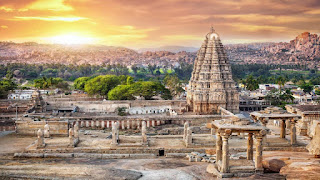Karnataka’s story is written in stone—from Paleolithic tools and megalithic tombs to grand empire capitals and today’s high‑tech boom in Bengaluru. Let’s journey through time and explore four defining eras of this rich land.
1. Prehistoric Beginnings (c. 100,000 BC–500 BC)
Early hunter‑gatherers roamed the region, fashioning flaked stone tools and microliths. By the Neolithic, farming communities along the Krishna and Tungabhadra rivers cultivated millet and domesticated cattle.
Below: A megalithic dolmen at Hirebenakal, one of South India’s largest prehistoric burial sites.
2. Classical Kingdoms (c. 3rd Century BC–5th Century AD)
Under Mauryan influence, Buddhism and Jainism spread—Ashoka’s edicts at Maski bear witness. The Satavahanas and local chieftains fostered trade routes linking Karnataka’s ports to the Indian Ocean world.
3. Temple Builders & Empire Makers (5th–17th Century AD)
-
Kadambas & Gangas (5th–10th AD): Banavasi and Talakad became centers of early Kannada rule and Jain patronage.
-
Chalukyas & Rashtrakutas (6th–10th): Rock‑cut marvels at Badami and Ellora emerged under these dynasties.
-
Hoysalas & Vijayanagara (11th–17th): Star‑shaped soapstone temples at Belur and Halebidu gave way to the magnificent city of Hampi, capital of a pan‑Indian empir
Below: The 7th‑century Badami cave temples, early masterpieces of Chalukya architecture.
4. From Kingdom to Cosmos of Code (18th Century–Present)
After Tyrant Tipu Sultan’s defeat in 1799, the Great Wodeyars modernized Mysore State under British suzerainty. Reorganized on linguistic lines in 1956, today’s Karnataka embraces both tradition and technology—Bengaluru is truly India’s “Silicon Valley.”
Below: Night view of the contemporary Bengaluru skyline, where centuries of innovation converge.
Exploring Further
-
Visit: Rock shelters at Hirebenakal and Badami’s cave temples for ancient marvels.
-
Wander: The ruins of Vijayanagara at Hampi, now a UNESCO World Heritage site.
-
Experience: Bengaluru’s tech parks alongside heritage sites like City Summer Palace.
Karnataka’s landscape is a living archive—each stone and skyline tells a chapter of its epic odyssey.





.jpg)
Comments
Post a Comment